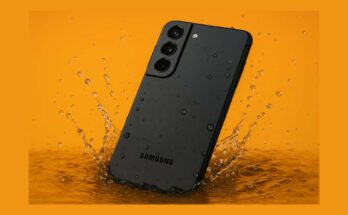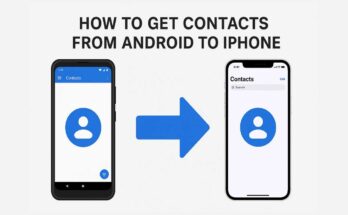In the swiftly changing world of mobile technology today, smartphones are becoming more or less the standard and are offering features and capabilities once thought to be impossible. Western theory notes flip phones as the precursors of mobile communication, although they fell back into oblivion with the introduction of shiny touchscreen devices. Small and portable, flip phones were invented with the late 1990s and early 2000s, marking an era of innovation. But when actually did flip phones come to life? And how long did it take for them to evolve through the ages? We will explore along the journey of flip phones invented from their origins to their eventual death on the side of mobile communication.
The Flip Phone Concept
During 1966, the popular science fiction series, Star Trek, introduced a futuristic device called a communicator that would serve as the inspiration for the first such devices made for real-world use. This handheld gadget closely resembled what the world would come to know as a flip phone. At the time, it was simply a fictitious concept.
The first practical step toward a flip phones invented in 1973 when Dr. Martin Cooper, an engineer at Motorola, invented the first portable mobile phone: the Motorola DynaTAC 8000X. Although it was inconveniently large and heavy for its time and awkward to carry and use, it made important contributions to mobile technology’s future.
Forerunner of Flip Phone: Motorola MicroTAC (1989)

Motorola MicroTAC was the first flip phones invented ever available in the field and was introduced in 1989. Instead of folding from the middle like an ordinary flip phone, it had an openable mouthpiece. Thus, although it was relatively smaller than the previous models of mobile phones, it still wasn’t as small as a flip phone can be these days. It was indeed the forerunner of flip phones, as it paved the way for their convenience and portability.
The MicroTAC was one of the first portable, practical mobile phones for everyday use. Unfortunately, it was still on the expensive side and thus limited in terms of access to business professionals and the affluent.
The Rise of the Classic Flip Phone: Motorola StarTAC (1996)
As it turns out, the real revolution in flip phone design started with Motorola’s StarTAC in 1996. It was the first clamshell-styled flip phone that fully folds in half. Furthermore, it was among the earliest mobile phones to integrate vibration alerts alongside ringing-a feature that was later accepted as standard in subsequent models.
This flip phone changed the game due to its lightweight, compact size with user-friendliness. Gradually, it acquired a kind of status emblem and symbol of innovation. The star of the Show, thus, made other mobile-phone manufacturers follow suit, which led to a boom in manufacture.
The Golden Era of Flip Phones (2000s)
From the 2000s onwards, everyone and their grandmothers had a flip phones. Major mobile companies began rolling out state-of-the-art phones with vibrant screens, built-in cameras, and, most importantly, the internet! Among the most famous flip phones of the era were:

- Motorola Razr V3 (2004) – Possibly the most ubiquitous flip phone in history, the Razr V3 was sleek, fashionable, and feature-packed. It became a cultural icon, amassing over 130 million sales worldwide.
- Samsung SGH-E700 (2003) – One of the first few flip phones with an integral camera, it had in fact put the very first footsteps on the road of mobile photography.
- Nokia 6060 (2005) – A nice pick with a hardy build and low cost that appealed to the masses.
- Sony Ericsson Z525 (2006) – This baby had great speaker quality and an external display to notify the user.
They were compact and technologically advanced, desired by consumers.
Decline of Flip Phones
Flip phones were in decline by the end of the 2000s when touchscreen smartphones like the Apple iPhone (2007) and Androids were introduced. Consumers oriented themselves toward larger screens, more advanced software, and app-based functionality, thereby relegating flip phones to antiquity.
With the major manufacturers of mobile phones withdrawing from flip phone production, flip phones did not completely become extinct but remained with limited niche viability, mostly due to the preference of a clientele that valued simple designs, ruggedness, and extended battery life over up-to-date smartphone features.
The Comeback of Flip Phones in the 2020s
What is perhaps most unexpected-the state of the art-rebirth of the flipphones today would certainly have to do with time foldable screen technology. Hence again launched modern flip smartphones marked with advanced features but with a nostalgic flip design include Samsung, Motorola, and Huawei. Other examples are:
- Samsung Galaxy Z Flip (2020): This form-factor shift is meant for a foldable smartphone with a hybrid between an old design and its new counterpart.
- Motorola Razr (2019 and 2023 iterations): Another take on the classic Razr with foldable OLED technology.
- Huawei P50 Pocket (2021): Another innovative foldable phone with a premium touch.
These modern flip phones juxtapose a proudly pocketable compact design with top-of-the-line smartphone specs.
Conclusion
Flip phones invented and have indeed traveled the distance from 1989 and the Moto MicroTAC to contemporary high-tech foldable smartphones; thus, the impact that this form of cellular technology has made on mobile communications is tremendous. Modern designs deeply respect the legacy of the familiar 1990s and 2000s flip phones, even though they are no longer very fashionable.
We candidly say that, as technology branches out, the rekindling of flip phones seems to put a cycle of innovation in motion whereby fashions that were once pungent morph into a new path for resurrection. Flip phones have earned a permanent position in mobile history, as people regard them as nostalgic or practical, proving that style never fades.
“Visit Techbyprime For Article’s Like This”




